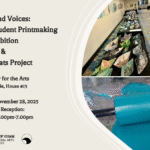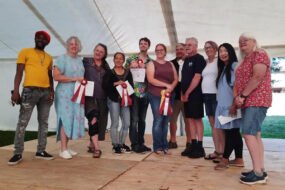
The Review of Sussex Arts (ROSA) has announced the introduction of Sussex Craft Week, which will take place from June 14 to June 22, 2025.
The event will feature a series of exhibitions, courses, demonstrations, and open studios.
The aim of the event is to celebrate the county’s craft makers and their creations.
The event will also highlight the history of craft in Sussex and its role in the current craft revival.
Gyr King, CEO of King & McGaw and partner of Sussex Craft Week, said: “Creativity on an industrial scale” is how Sussex Craft Week Partner, Gyr King, CEO, King & McGaw, describes the art and craft industry in Sussex today.
“Sussex Craft Week sets out to showcase this to the world with a series of high profile exhibitions, courses, demonstrations and open studios.”
The event will take place across East and West Sussex, as well as Brighton and Hove.
The county’s geographical location, with its chalky coastline, rolling Downs, and fertile lands, has provided both the natural resources and inspiration for a thriving craft scene for centuries.
In the medieval period, pottery flourished with a brickyard and kiln in every parish, particularly in Lewes and Hastings, where local clay was used to produce decorative ceramics as well as practical items such as bricks and pipes.
The region was also home to skilled spinners and weavers from the 16th century onwards, with Hailsham earning the name ‘Stringtown’ for its rope production.
The first glassmakers in British historical records were based in Dyers Cross Sussex, where skilled Hugenot artisans made windows for Westminster Abbey, Westminster Palace and Salisbury Cathedral.
The 18th and 19th centuries saw the rise of more industrialised craft production, including clockmaking.
Then Sussex played a role in the reaction against growing industrialisation: The Arts and Crafts Movement of the late 19th century, saw makers, inspired by the ideals of William Morris, producing hand-crafted furniture (including Morris’s famous ‘Sussex Chair’), textiles and metalwork in line with the movement’s defining principles of quality and truth to materials.
Making in Sussex flourished in the 20th century, becoming home to influential collectives such as the Ditchling Artists, Graffham Weavers and the Bloomsbury Group, as well as being an important place for the Modernist and Surrealist movements.
This rich legacy inspires innovation today.
Sussex is the location of national craft centres West Dean College and Ditchling Museum of Art + Craft, and is a hotbed of contemporary craft.
There has been a well documented surge in interest in handcrafts over the past decade.
The Crafts Council, the country’s foremost authority on contemporary craft, issued a report ‘The Market for Craft’ in 2020 which showed that our passion for craft has never been greater: 73% of UK adults bought craft in 2019 – snapping up almost 25 million handmade items.
In a significant shift, almost a third (32%) of today’s buyers are aged under 35 – making this demographic the biggest buyer of craft today.










